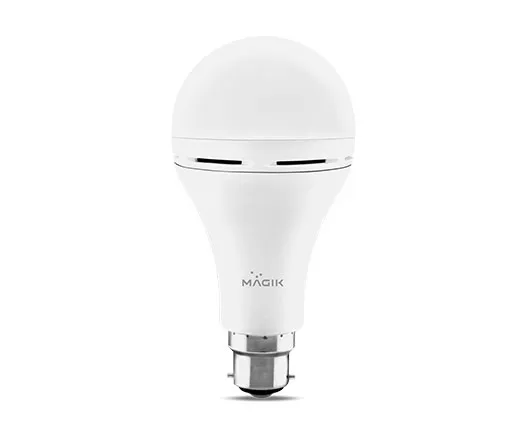LED light bulbs are an energy-efficient alternative to traditional incandescent or halogen lighting. They use less power than other types of light bulbs and last longer than most other types of bulbs. The colour spectrum for LEDs is measured in Kelvins (K), which means they produce a cooler light than other types of lighting because they use less heat to generate the same amount of brightness.
A brief overview of LED Bulbs
Light emitting diodes (LEDs) have been around since the 1960s, but it’s only recently that they’ve become a popular option for home lighting.
LED bulbs are more efficient, durable, energy-efficient and cost-effective than traditional light sources. They also last longer and have a higher lumen output and lower wattage than incandescent bulbs. In addition to these benefits, LED lights don’t contain toxic compounds like mercury or lead like other types of lighting do.
LED bulbs VS incandescent and halogen bulbs
LED bulbs use only part of the energy that incandescent or halogen bulbs use to produce the same amount of light. LEDs are more efficient at converting electricity into light, so they consume less energy than other types of light.
The colour of a lamp or bulb is important to consider when choosing an LED because it affects how much heat is generated by its filament, which can affect its lifespan if used in high-use spaces, such as basements or garages where temperatures can be extreme during winter months.
LEDs also come in several different colours: white, warm (2700K), cool (4000K), daylight and red/orange hues like blues and violets.
Uses of LED Lights
The colour temperature of LED lights is measured in Kelvins. The higher the number, the cooler the light and vice versa. The most common colour temperatures for LED bulbs are 3000K and 4000K.
LED light bulbs can be used for different things like:
Reading – LED lights offer an amazing spectrum of light which is perfect for reading and also harmless for your eyes.
Living room décor – They can be used in living room décor as they are warm
Kitchen lighting – You can use cool LED lights for your kitchen décor
Different colours to suit your mood or needs: You can choose from white, warm white and even cool blue LEDs which will give you the perfect light for any room in your home. If you want something more dramatic, red and amber versions are available too!
LED lights are durable and last a long time.
LED lights are very durable. The bulbs can last up to 50,000 hours on average, which is more than the average lifespan of incandescent bulbs (which typically only last around 1,000 hours). LEDs also have an expected lifespan of 20 to 25 years and some manufacturers claim that they can even last 100 times longer than incandescent bulbs! This will save you money in the long run by extending the life of your bulb.
LEDs are more expensive than traditional bulbs, but they’re expected to drop in price as technology improves and costs become more competitive with other types of lighting. The colour spectrum for LEDs is measured in Kelvin (K), so if you want white light, it’s best not to buy anything with a high Kelvin rating like 3200K. This means that there will be some yellowish tones in your light output at night (which could make things look less than great). You can choose from different colours such as warm white or bright white. These tend to have less blue content which makes them appear whiter overall.
The efficiency of LED Lights
LED lights are more efficient at converting electricity into light than other types of lights. LED bulbs use less energy, which make them better for your wallet and the environment. They also last longer than incandescent or halogen bulbs, so they save money over time.
The main difference between an LED and other types of lighting is that they produce very little heat while they’re on. As a result, you won’t have to worry about them heating your house or rooms like CFLs do when leaving on after being turned off. This can also be used in outdoor applications where heat could be an issue.
Conclusion
Now you know everything you need to know about LED bulbs! The lighting industry is an exciting one, and with new technology coming out every day, we can expect the future to be even brighter than it is now. It’s important for homeowners who want to make sure their home has longevity as well as energy-efficient lighting solutions. We hope this guide has helped educate you on the many benefits of LEDs and how they can benefit your home or business.

